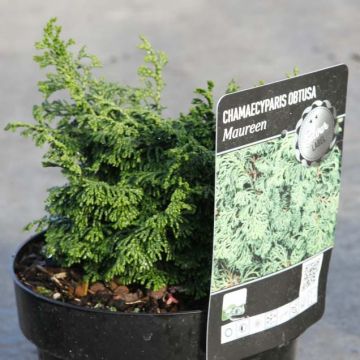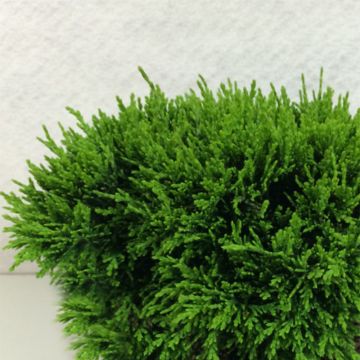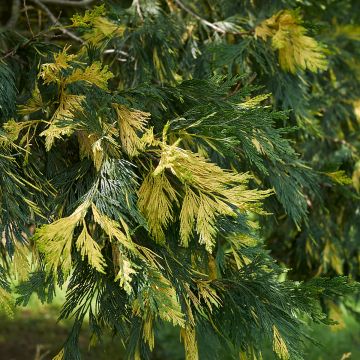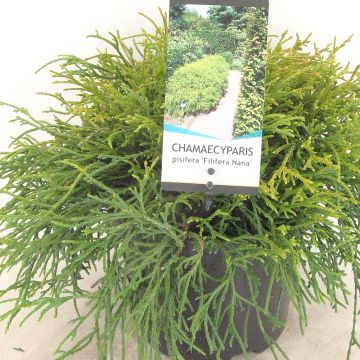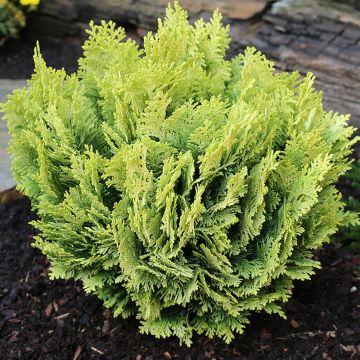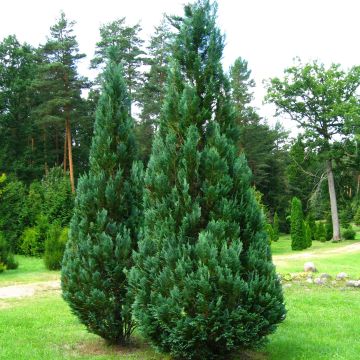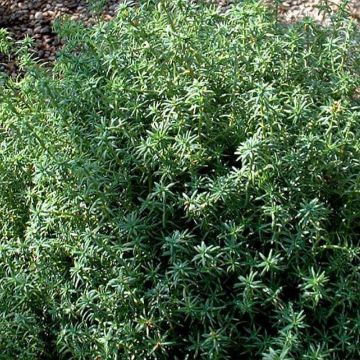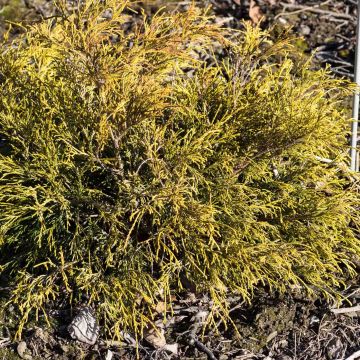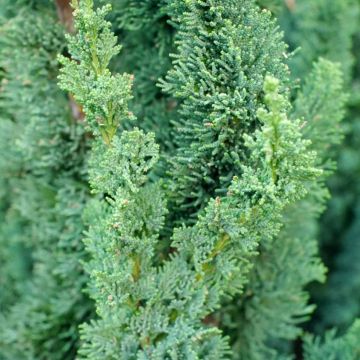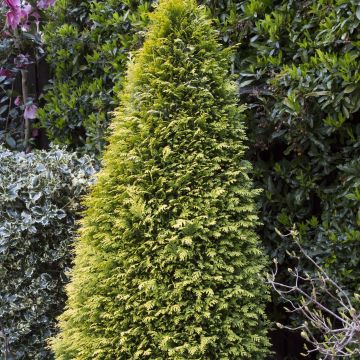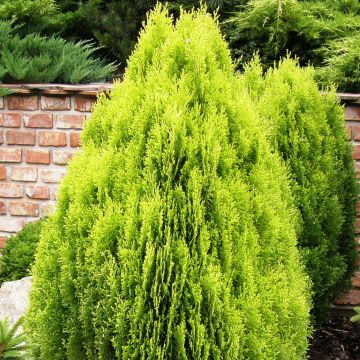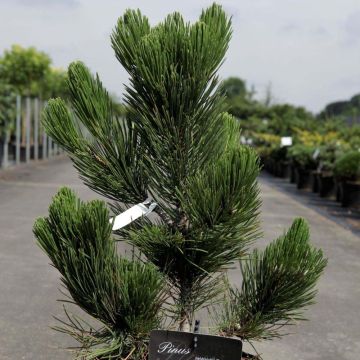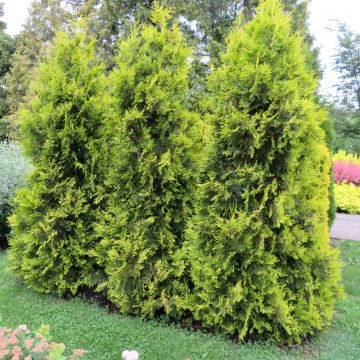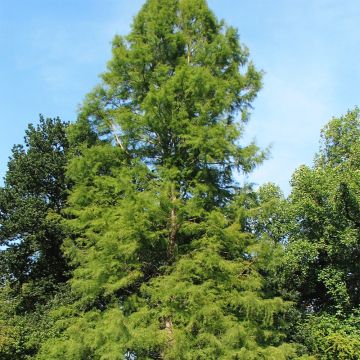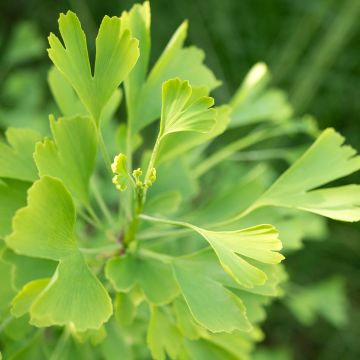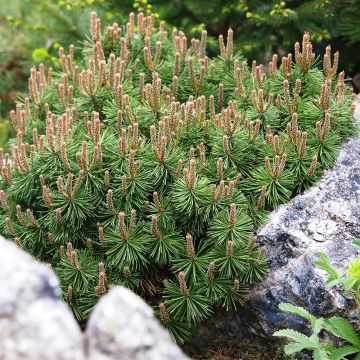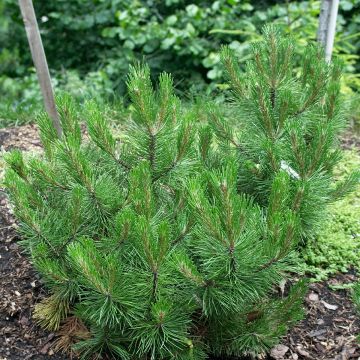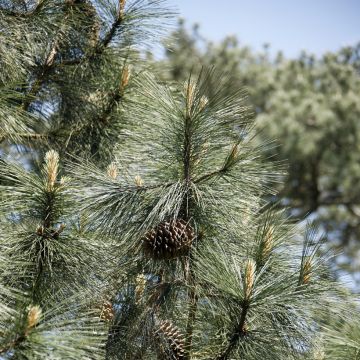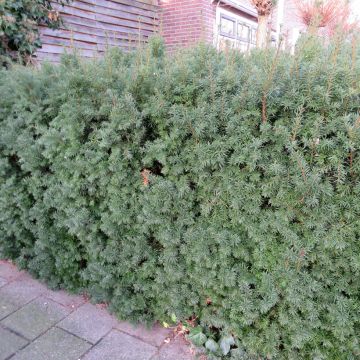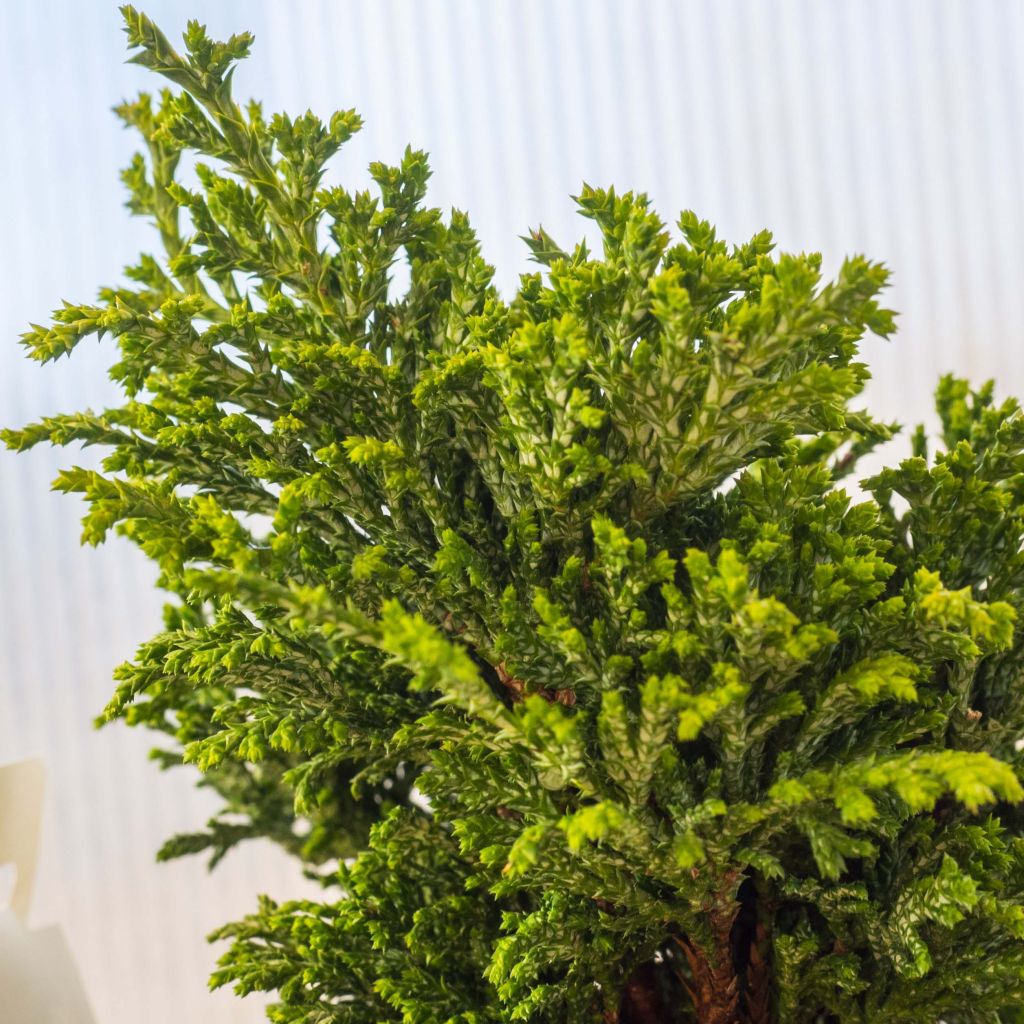

Chamaecyparis pisifera Hime-sawara - Sawara Cypress
Chamaecyparis pisifera Hime-sawara - Sawara Cypress
Chamaecyparis pisifera Hime-sawara
Sawara Cypress, Japanese false cypress
This plant carries a 24 months recovery warranty
More information
We guarantee the quality of our plants for a full growing cycle, and will replace at our expense any plant that fails to recover under normal climatic and planting conditions.
From €5.90 for pickup delivery and €6.90 for home delivery
Express home delivery from €8.90.
Does this plant fit my garden?
Set up your Plantfit profile →
Description
The Chamaecyparis pisifera Hime-Sawara is one of the smallest conifers currently available on the market. This pretty, compact form of Sawara Cypress naturally forms a wide and flattened cushion, adorned with strongly-scented foliage of bright golden green. With its truly slow growth, it is perfectly suited for ornamenting small gardens, rockeries, and terraces. It is also an excellent candidate for bonsai enthusiasts.
The Chamaecyparis pisifera is a robust Japanese species belonging to the Cupressaceae family, which can reach 45 metres (147 feet 7 inches) in its natural state. It is mainly used for its evergreen, lemon-yellow wood in the production of lacquered furniture and the construction of numerous buildings, such as palaces in its country of origin. It has given rise to multiple cultivars, classified into four groups: 'Plumosa', 'Squarrosa', 'filifera', and 'Nana'.
The Hime-Sawara variety grows into a dense, rounded bush, often wider than tall. At around 20 years old, it reaches an average height of 50 cm (19.7 in) and a span of 55 cm (21.7 in). Its reddish-brown branches have tightly packed branchlets at their tips. In spring, young shoots tinted with green-yellow appear at the ends of the branchlets, contrasting with the light green background. These golden colours fade in autumn as the foliage is coloured with hues of bronze. The needle-like leaves have a white band on the underside, corresponding to a row of stomata, the "pores" on the plant's epidermis. The bark of the plant is dark red and has a stringy appearance, though barely visible.
The Chamaecyparis pisifera 'Hime-Sawara' is not difficult to cultivate, but it is more suited to humid and cool climates and does not like chalky soils: it is not suitable for hot and dry regions. It is a conifer with a delicate appearance, to be showcased in a small garden, rockery, or in a container on the terrace. With its slow growth and bright foliage, it looks stunning alongside other evergreen plants, small perennials, or ground covers. It pairs well with plants with creeping or columnar habits. In a minimalist garden, light grey gravel or brown mulch can be placed at its base. If you want to design a contemporary or urban garden, dwarf conifers are an excellent choice. These plants have a distinctive look and provide a long-lasting structure to your garden beds, pathways, and terraces. They also complement wild grasses, creating a cohesive design. Play around with volumes and colours to make the most of your design.
Chamaecyparis pisifera Hime-sawara - Sawara Cypress in pictures


Plant habit
Foliage
Botanical data
Chamaecyparis
pisifera
Hime-sawara
Cupressaceae
Sawara Cypress, Japanese false cypress
Cultivar or hybrid
Other Chamaecyparis
Planting and care
If you want to plant a Chamaecyparis pisifera 'Hime-Sawara', choose a spot with fertile, moist, and well-drained soil. Avoid using heavy or waterlogged soil or limestone soil. The best time to plant this variety is from September to November or February to June. Choose a sunny spot that is not too hot or too windy. Soak the roots before planting and add organic material during planting. Water generously for the first few years and apply a special conifer fertiliser every April. Cultivate the soil in the summer. This variety prefers a humid and cool climate but cannot tolerate dry and scorching summers or overly dry air. It does not require pruning.
Planting period
Intended location
Care
This item has not been reviewed yet - be the first to leave a review about it.
Conifers
Haven't found what you were looking for?
Hardiness is the lowest winter temperature a plant can endure without suffering serious damage or even dying. However, hardiness is affected by location (a sheltered area, such as a patio), protection (winter cover) and soil type (hardiness is improved by well-drained soil).

Photo Sharing Terms & Conditions
In order to encourage gardeners to interact and share their experiences, Promesse de fleurs offers various media enabling content to be uploaded onto its Site - in particular via the ‘Photo sharing’ module.
The User agrees to refrain from:
- Posting any content that is illegal, prejudicial, insulting, racist, inciteful to hatred, revisionist, contrary to public decency, that infringes on privacy or on the privacy rights of third parties, in particular the publicity rights of persons and goods, intellectual property rights, or the right to privacy.
- Submitting content on behalf of a third party;
- Impersonate the identity of a third party and/or publish any personal information about a third party;
In general, the User undertakes to refrain from any unethical behaviour.
All Content (in particular text, comments, files, images, photos, videos, creative works, etc.), which may be subject to property or intellectual property rights, image or other private rights, shall remain the property of the User, subject to the limited rights granted by the terms of the licence granted by Promesse de fleurs as stated below. Users are at liberty to publish or not to publish such Content on the Site, notably via the ‘Photo Sharing’ facility, and accept that this Content shall be made public and freely accessible, notably on the Internet.
Users further acknowledge, undertake to have ,and guarantee that they hold all necessary rights and permissions to publish such material on the Site, in particular with regard to the legislation in force pertaining to any privacy, property, intellectual property, image, or contractual rights, or rights of any other nature. By publishing such Content on the Site, Users acknowledge accepting full liability as publishers of the Content within the meaning of the law, and grant Promesse de fleurs, free of charge, an inclusive, worldwide licence for the said Content for the entire duration of its publication, including all reproduction, representation, up/downloading, displaying, performing, transmission, and storage rights.
Users also grant permission for their name to be linked to the Content and accept that this link may not always be made available.
By engaging in posting material, Users consent to their Content becoming automatically accessible on the Internet, in particular on other sites and/or blogs and/or web pages of the Promesse de fleurs site, including in particular social pages and the Promesse de fleurs catalogue.
Users may secure the removal of entrusted content free of charge by issuing a simple request via our contact form.

































